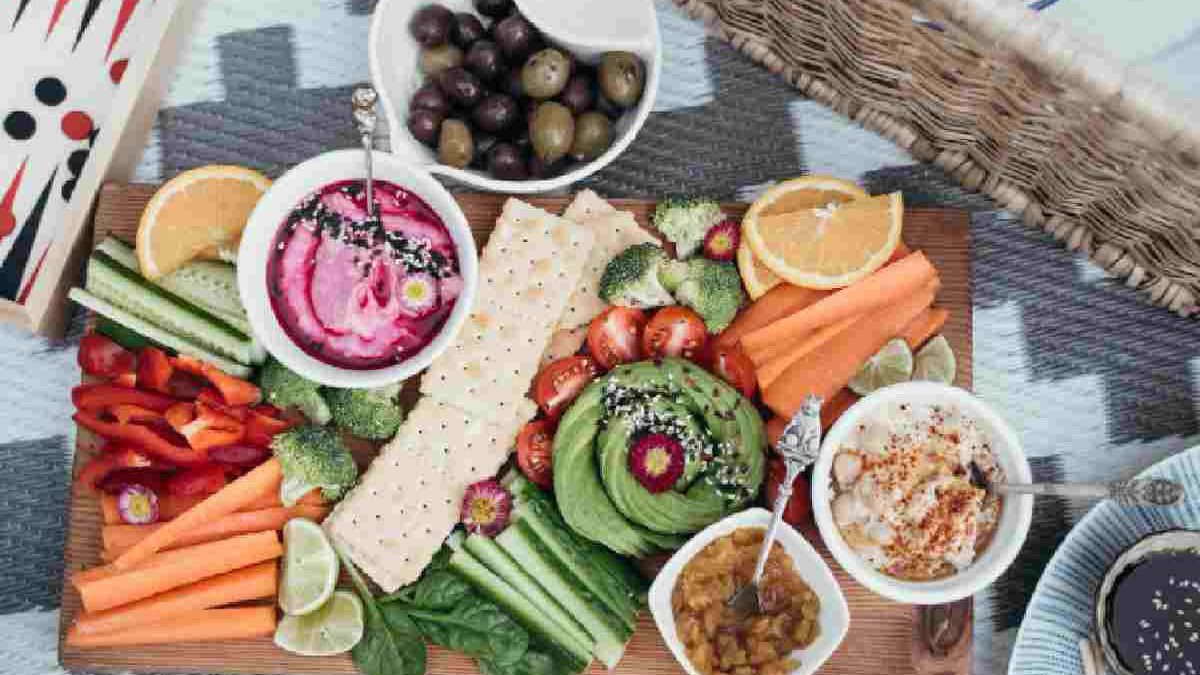Eating Healthy Without Sacrificing Taste – While it’s incredibly important to eat a healthy and balanced diet, it can also be very challenging at times. Many people believe that healthy foods simply don’t taste as good as junk food and other unhealthy options. But the truth is, you don’t have to give up delicious food in order to eat healthy. There are many foods that are both tasty and good for your health.
Table of Contents
Understanding the Importance of Healthy Eating
Healthy eating is essential for maintaining good health and reducing the risk of chronic diseases. A healthy diet should include a variety of foods from different food groups, such as fruits, vegetables, whole grains, lean proteins, and healthy fats. Eating a balanced diet has numerous benefits, including reducing the risk of heart disease, stroke, and other health conditions, as well as improving mood and memory. Additionally, incorporating healthy foods into one’s diet can provide essential nutrients that support overall health, such as vitamins, minerals, and antioxidants. Thus, understanding the importance of healthy eating is crucial for maintaining good health.
While there are many benefits to eating healthy, there are also common dietary risks that individuals should be aware of and avoid. For example, consuming too much saturated fat, added sugars, and salt can increase the risk of chronic diseases. To avoid these risks, individuals should aim to limit their intake of these substances and instead focus on incorporating more whole foods into their diet. Additionally, it is important to avoid skipping meals and instead aim to eat a balanced meal that includes a combination of vegetables, starch, and protein. By being mindful of these risks and making healthy choices, you can
maintain good health and reduce the risk of chronic diseases.
Making healthy eating a habit can be challenging, but there are several strategies that can help. One effective approach is to start by making small changes to one’s diet, such as adding more fruits and vegetables or reducing portion sizes of unhealthy foods. Another helpful strategy is to take it slow when introducing healthy eating habits and make changes gradually. Additionally, individuals can make healthy eating more enjoyable by experimenting with new recipes and incorporating healthy ingredients into their favorite dishes. You can even look for healthier alternatives to snacks you already enjoy. For example, consider the different brands on https://jerkybrands.com/ and find an option with better nutrition content that still sounds tasty. With persistence and dedication, healthy eating can become a habit that supports overall health and well-being.
Making Flavorful Healthy Food
Healthy meals don’t have to be bland and boring. By experimenting with herbs and spices, you can add new flavors and potential health benefits to your dishes. Black pepper, turmeric, ginger, garlic, and other spices can add depth and complexity to your meals while providing anti-inflammatory and antioxidant properties. Fresh herbs like mint, basil, cilantro, and thyme can also effortlessly add flavor to meals.
Using healthy fats and oils is another way to make your meals more flavorful and enjoyable. Polyunsaturated fats and monounsaturated fats, found in sources such as nuts and nut-based oils, can be beneficial for your health. Using healthier oils like olive oil or canola oil instead of butter or other unhealthy fats can add flavor to your dishes while also reducing the amount of saturated fat in your diet.
Incorporating whole foods and fresh produce into your meals is also essential for making healthy meals flavorful and enjoyable. Whole grains, fruits, and vegetables offer a wide range of flavors and textures that can add variety to your meals. Focusing on whole foods from plant sources can also reduce the risk of heart disease, cancer, and diabetes. By limiting processed and refined foods and incorporating more whole foods into your diet, you can create meals that are both healthy and delicious.
Tasty and Healthy for Every Meal
Starting the day with a healthy breakfast is essential for maintaining good health and energy throughout the day. Incorporating healthy breakfast options into your daily routine can be easy and delicious. For example, oatmeal is a low-calorie and nutritious breakfast option that can help with weight loss. Other healthy breakfast ideas include eggs, berries, avocados, and Greek yogurt. By combining healthy vegetables, starch, and protein at every meal and avoiding skipping meals, individuals can eat healthily without sacrificing taste.
For a healthy lunch at work or school, meal prepping is a great option. Make-ahead lunches like hummus and pita chips, yogurt and muffins, and tuna salad with apples are quick, easy, and nutritious. Other options include chicken and veggie wraps, fajita salads with steak, and paleo egg salad. These lunch ideas can be affordable and flavorful, making it easy to stick to a healthy diet without feeling deprived.
Healthy dinner recipes for the whole family can be both delicious and nutritious. Some ideas include creamy kale pasta, gingery spring soup, and adobo glazed portobello tacos. Other options include chicken Caesar lettuce cups, southwest black-bean pasta salad bowls, and “chickpea” salad. Eating well on a budget is possible with recipes like bean salad, modern tuna casserole, and healthy turkey chili.
Maintaining a healthy balanced diet doesn’t have to be a chore. There are plenty of foods that
are great for your body while still being full of flavor. Remember that balance is key, so if you
have persistent cravings it’s more than alright to indulge every now and then. Just try to
establish healthy eating habits and you’ll find that maintaining your diet will get easier over time.


